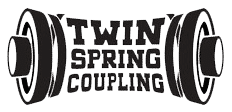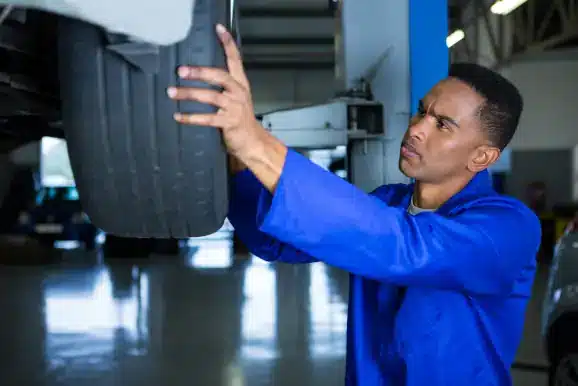How to Choose the Right Replacement Coupling for Your Vehicle
Table of Contents
As a car owner, maintaining your vehicle is essential, and when it comes to power transmission, one small yet crucial part often goes unnoticed—the coupling. Whether you’re dealing with vibrations, unusual sounds, or simply doing routine maintenance, understanding how to choose the right replacement coupling can keep your vehicle running smoothly and help you avoid potential headaches. Don’t worry—it’s easier than it sounds, and I’ll break it all down for you!
What Are Power Transmission Couplings?
First things first, let’s talk about what power transmission couplings actually do. These tiny mechanical components are the unsung heroes of your vehicle’s drivetrain. Simply put, couplings connect two rotating shafts—typically, the engine and the wheels—and transfer power between them. This is what gets your car moving.
In most vehicles, especially with rear-wheel and all-wheel-drive systems, universal joints (U-joints) and constant velocity joints (CV joints) are the most common types of couplings used. Both types play a critical role in ensuring the smooth transfer of power, but they wear out over time and need to be replaced.
Signs Your Couplings Need Replacement
How do you know it’s time to replace your vehicle’s coupling? There are some clear warning signs:
- Clunking noises: If you hear odd sounds when shifting gears or while driving, that’s a big clue.
- Vibration when driving: A shaky ride might mean the coupling has worn down and isn’t operating as it should.
- Grease leakage: CV joints are covered in grease to reduce friction, and if you see grease splatters under your car, it might be time for a replacement.
- Excessive wear or looseness: During a routine inspection, you or your mechanic might notice that the coupling isn’t sitting tight anymore. This is a sure sign it’s time to act.
Types of Couplings: Which One’s Right for You?
So, your coupling’s on the fritz—now what? The first thing you need to do is figure out what kind of coupling your vehicle uses. Each type of coupling is designed for different vehicles and driving conditions, and they all serve different purposes. Here’s a breakdown:
Universal Joints (U-Joints)
Universal joints, or U-joints, are the most common type of coupling used in vehicles, particularly for rear-wheel-drive cars. They are designed to accommodate slight misalignments between two shafts and are flexible enough to deal with different angles as the car moves over uneven surfaces.
- Pros: U-joints are durable and can handle a fair bit of stress, making them ideal for off-road vehicles and heavy-duty trucks.
- Cons: They wear out with heavy use and aren’t as smooth as constant velocity joints. They might not be ideal for more sensitive, high-performance vehicles.
Constant Velocity Joints (CV Joints)
CV joints, on the other hand, provide smooth power transfer even at steep angles. They are commonly found in front-wheel-drive cars and some all-wheel-drive vehicles. They’re particularly good at maintaining constant power transmission even when the wheels are turned sharply, like during tight cornering.
- Pros: Smooth operation at all angles, ideal for cars that need tight handling and precision.
- Cons: CV joints can be more prone to wear and tear because they’re covered by a protective rubber boot, which can crack and expose the joint to dirt and debris.
OEM vs. Aftermarket Couplings: What’s the Difference?
Now that you know the types of couplings, you’ll need to decide whether to go with an OEM (Original Equipment Manufacturer) part or an aftermarket replacement.
OEM Couplings
OEM couplings are made by the same company that manufactured the original part in your car. For example, if you drive a Ford, OEM couplings would come from a brand like Dana Spicer, Moog, or Neapco—companies that supply to major car brands.
- Pros: Guaranteed fit and function. You know exactly what you’re getting, and it’s designed specifically for your vehicle.
- Cons: These can be pricier than aftermarket parts, and availability might be limited.
Aftermarket Couplings
Aftermarket couplings are made by third-party manufacturers. These couplings can be just as good as OEM parts but are typically cheaper.
- Pros: Cost-effective and widely available. You have a lot of options to choose from.
- Cons: Not all aftermarket parts are created equal. Some might not last as long, or they may not fit your vehicle as well as OEM parts.
How to Choose the Right Coupling
Once you know the type of coupling your vehicle uses and whether you want OEM or aftermarket parts, how do you make the final decision? Here’s what to consider:
- Compatibility: Always make sure the coupling fits your vehicle’s make, model, and year. You don’t want to buy a part that isn’t designed for your car. Check your owner’s manual or ask your mechanic if you’re unsure.
- Driving Conditions: Do you use your vehicle for light city driving or rugged off-roading? Heavy-duty couplings, such as U-joints, may be better for rough terrains, while CV joints excel in handling tight turns and cornering.
- Material Quality: Look for durable materials, like forged steel, for long-lasting performance. Poor-quality parts might save you money upfront but cost more in the long run due to faster wear.
- Brand Reputation: Whether you go with OEM or aftermarket, stick to reputable brands. Trusted manufacturers like Dana Spicer, Moog, Meritor, Neapco, and SKF are known for their high-quality parts.
- Price vs. Value: Don’t just look at the price tag. While it’s tempting to go for the cheapest option, remember that a high-quality coupling can save you time, money, and frustration in the long run by lasting longer and offering better performance.
Installation Tips: DIY or Professional Help?
If you’re a seasoned DIY mechanic, you might want to take on the task of replacing the coupling yourself. However, couplings can be tricky to install, especially if you’re dealing with U-joints or CV joints that require precision.
- DIY Pros: Save money on labor costs, and if you’ve got the right tools, you can handle the job on your own.
- DIY Cons: If the installation isn’t done right, you could risk damaging other parts of the drivetrain or voiding your warranty.
For most drivers, it’s best to leave the replacement to a professional. Your mechanic can also help you choose the right part and ensure everything is installed properly.
Where to Buy Your Replacement Coupling
Ready to buy your replacement coupling? There are plenty of online retailers that sell both OEM and aftermarket couplings. Amazon, Zoro, and eBay are great places to start. If you want to ensure a smooth and hassle-free purchase, consider visiting specialized websites like Twin Spring Coupling, which offer a wide range of power transmission couplings for different vehicles.
The Future of Power Transmission Couplings
As automotive technology evolves, so do the parts that power your vehicle. In recent years, manufacturers have started developing more durable, lightweight couplings that can handle higher torque and stress. Future innovations could include smart couplings that monitor wear and tear and alert you before failure occurs. Whether you’re driving a hybrid, electric, or conventional gas-powered car, the importance of quality couplings will continue to grow as automotive systems become more complex.
How to Choose the Right Replacement Coupling for Your Vehicle
Final Thoughts: Why Choosing the Right Coupling Matters
Couplings may be small, but their importance is anything but. Choosing the right coupling for your vehicle ensures smooth power transmission, enhances performance, and keeps you driving safely. Whether you opt for a heavy-duty U-joint or a precision-focused CV joint, the right coupling can make all the difference.

